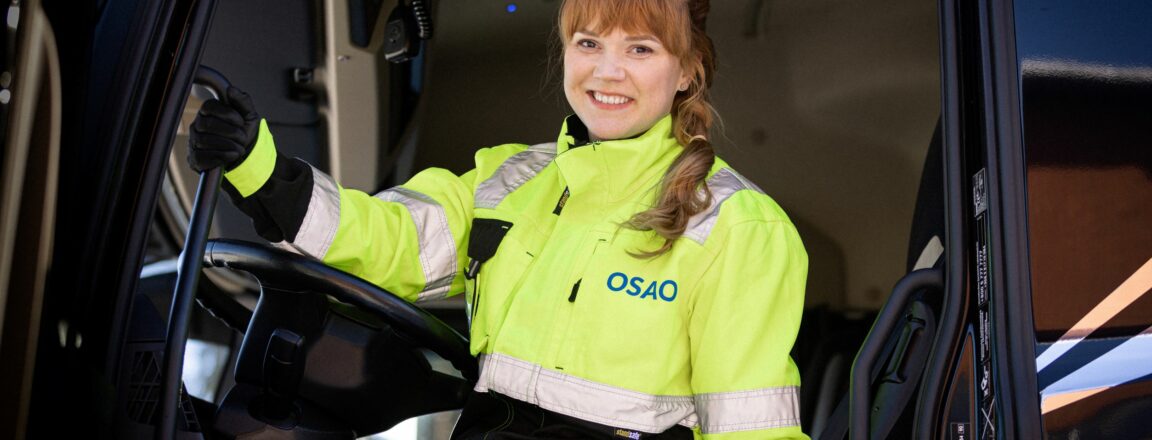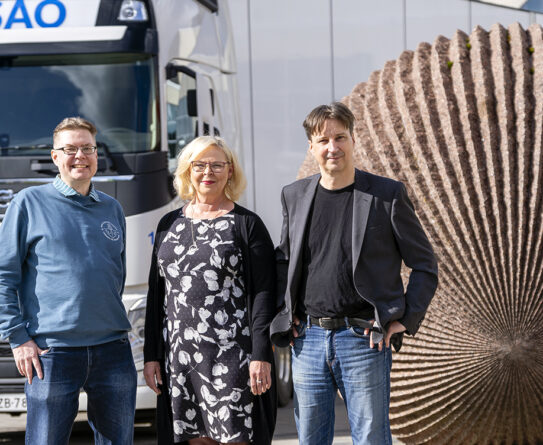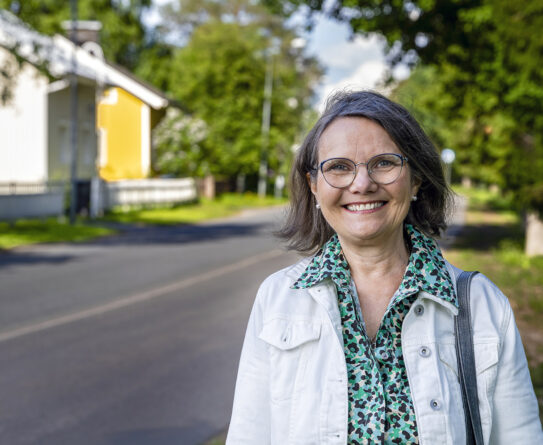
New Generation Logistics is Being Built in Oulu – Finland’s First Hydrogen Truck
Elementti näyttää Voice Intuitiven kuuntelunapin ja translate-valikon
The collaboration initiated in Oulu is significantly advancing the development of the hydrogen economy in the region and across Finland. The funding allocation for Finland’s first hydrogen truck, set for 2025, will revolutionise the entire transportation chain and promote the achievement of carbon neutrality.
The Educational Consortium OSAO, the University of Oulu, and Oulu University of Applied Sciences have launched a diverse collaboration within the green transition project cluster, which concretely integrates research, development, and education.
One of the most significant investments in the project, alongside an electric truck, will be Finland’s first hydrogen truck, whose suitability and role in the logistics chain will be tested.
“We are closely collaborating with the University of Oulu to examine the functionality and adaptability of the hydrogen truck for various transport tasks. Hydrogen and electric-powered heavy transport are seen as having tremendous potential in achieving carbon neutrality goals. We are currently mapping out hydrogen truck options for next year’s planned acquisition,” explains Marjaana Komi, project manager of the VISIOK project at OSAO.
The investments support the shared goals of Educational Consortium OSAO, the University of Oulu, and Oulu University of Applied Sciences in developing environmentally friendly logistics. Transitioning heavy vehicles to alternative energy sources such as hydrogen or electricity will significantly contribute to Finland’s goal of reducing greenhouse gas emissions by 60% by 2030.
The hydrogen truck is a tangible example of how we can combine research, education, and sustainable development goals,” says Jouni Juntunen, docent and university researcher in supply chain management at Oulu Business School.
“Renewable fuels are not only an environmental issue but also an economic one. If we do not succeed in the green transition among the first, our international economic competitiveness will collapse as logistics costs in other parts of Northern Europe decline sharply. Given Finland’s length, this is especially emphasised in Northern Finland.”
New Learning Environments to Train Future Experts
In addition to investments in alternative energy sources, the three organisations are developing digital and augmented reality learning environments for the maintenance and servicing of heavy vehicles, the forestry sector, and internal logistics management. Skill needs and market conditions are being assessed in cooperation with companies.
“Companies are moving towards largely automated systems and the utilisation of robotics in internal logistics. Our learning and demonstration environments, as well as training programmes, need to meet these changing skill demands,” says Kalle Nuortimo, project coordinator at Oulu University of Applied Sciences.
Updated learning environments incorporating the latest technologies will be used in new multidisciplinary training programmes, which will promote employment and business opportunities in the green transition sectors. In the future, these learning environments will be widely used for both teaching and research.
The Green Transition Project Cluster
The three-year project cluster coordinated by Educational Consortium OSAO has received funding from the Council of Oulu Region through the European Regional Development Fund (ERDF) and the Just Transition Fund (JTF), as well as from the Centre for Economic Development, Transport and the Environment in Northern Ostrobothnia via the JTF.
The project cluster was prepared as part of the Oulu Innovation Alliance collaboration, with the City of Oulu / BusinessOulu acting as a co-financier.
The total budget for the project cluster exceeds 4 million euros.

Translated from Finnish by Heli Raappana



